The first time I spotted my parents’ copies of “Kill Bill,” I knew that they were something special. They stood out amongst the rest of our dark, plain DVD cases with their vivid yellow and red spines, and the cover image of a leather-clad, poker-faced, samurai-sword-wielding Uma Thurman captivated me. I was only eight then, and it wouldn’t be another six years until I finally watched those discs and was introduced to the violent, vibrant, and darkly hilarious world of director Quentin Tarantino. I consumed his other films as quickly as I could, diving into the “realer than real” world of “Reservoir Dogs” and “Pulp Fiction” and venturing back into Tarantino’s highly-stylized, mostly-fictionalized history of America with “Inglourious Basterds” and “Django Unchained.”
Tarantino’s less-acclaimed films (“Jackie Brown,” “Death Proof”) slipped through my fingers until recently, when a title card 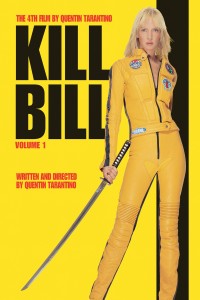 proclaiming Tarantino’s most recent film (“The Hateful Eight”) prompted me to round out my immersion in the twisted, hardcore, kick-butt universe of Quentin Tarantino’s films.
proclaiming Tarantino’s most recent film (“The Hateful Eight”) prompted me to round out my immersion in the twisted, hardcore, kick-butt universe of Quentin Tarantino’s films.
“The Hateful Eight” prompted me to take another, more thoughtful action, as well: it prompted me to take a step back and start considering how Tarantino depicts women in his films.
Before seeing “The Hateful Eight,” I began to notice waves of controversy emerge from multiple directions: from Tarantino’s recent comments on police brutality, to his use of the N-word in the film (a controversy that has re-emerged consistently throughout his career), and his depiction of violence against the sole female character in the film. This last topic remained in the back of my mind as I watched Jennifer Jason Leigh (portraying Daisy Domergue, an arrested murderer) get punched, shot, and (spoiler alert) brutally hung to death throughout the course of “The Hateful Eight.” Admittedly, the violence Leigh’s character experiences is often sudden and shocking but I left the theater wondering why audiences and critics were responding so strongly to this film with some even labeling Tarantino a misogynist. Especially since Tarantino has depicted far worse violence toward women in his other films. Throughout his film career, for instance, we’ve seen women lose limbs and eyeballs, get scalped, shot, stabbed, strangled, buried alive and whipped. On paper, Tarantino’s varied acts of violence toward women sound particularly brutal and hard to justify (or at least ignore): so what exactly is the point of all this violence? Is it simply a male filmmaker channeling his personal, twisted fantasies of committing pointless and extreme acts of violence towards women? Or is it a harsh, but perhaps necessary, attempt to normalize the concept that female characters can undergo the same violence as their male counterparts and stand their ground equally as well, or even counter with their own shocking acts of vengeance?
To understand, or at least contextualize, the female-directed violence of Tarantino’s most recent film, it’s important to look back on his previous seven films, starting with 1992’s “Reservoir Dogs.” Tarantino’s debut as both a writer and director (which premiered at the 1992 Sundance Film Festival to almost universal acclaim) is cleverly written, uniquely edited, and notably devoid of a single female character (unless you count the nameless woman who is shot as the main character Mr. Orange steals her car). Although some critics noted the lack of speaking female characters when the film first premiered, the general consensus seems to be that the film simply doesn’t have a natural place for a female character, and I have to agree. The ultimate success of “Reservoir Dogs” lies in Tarantino’s ability to craft a story so engaging and immersive that the gender of the characters becomes largely insignificant. The movie is not about a group of men, but rather, a group of complicated people: some are likable, some are sleazy, and some are a strange mix of both.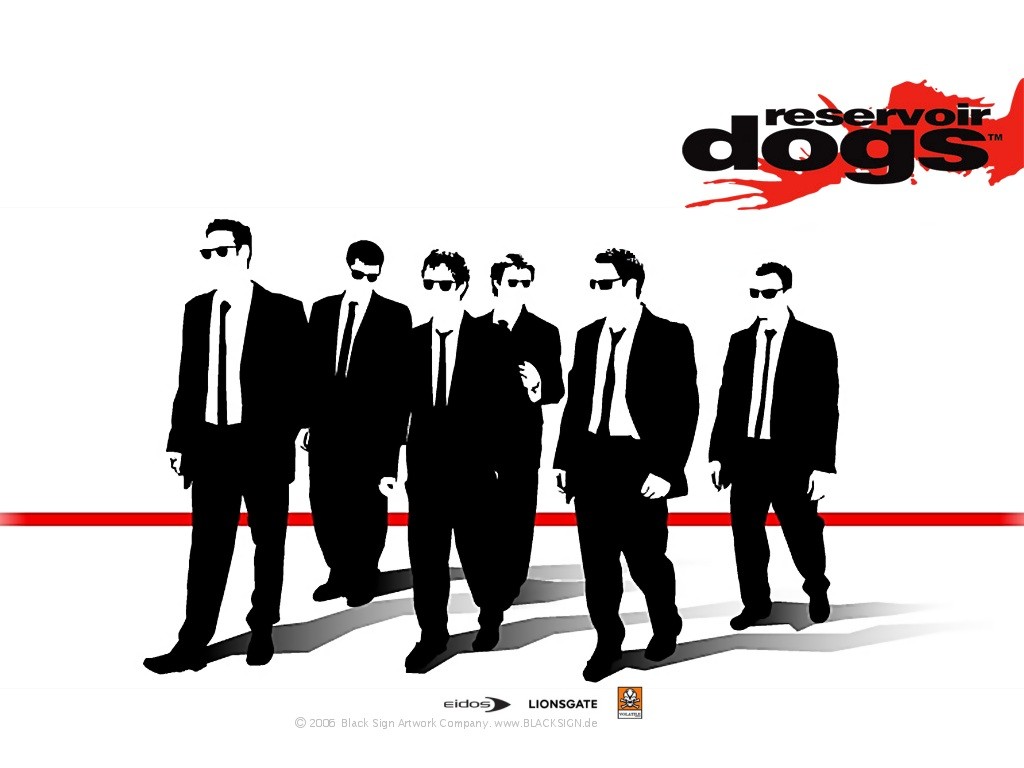
All eyes were on Tarantino after his stellar filmmaking debut, and he arguably exceeded expectations with his second film, “Pulp Fiction,” another crime-centered flick that features a larger (and more diverse) group of characters, including the iconic Mia Wallace. Wallace is only featured in one chapter of the film (although she does make a brief appearance in a later segment), but she certainly leaves her mark as one of the more intriguing characters: she snorts cocaine, voices her hatred of small talk, and dances 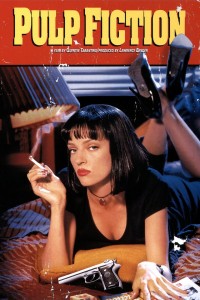 like nobody’s business. While it would have been easy for Wallace to cross into Manic Pixie Dream Girl territory (a land where female film characters serve only to help their male counterparts realize the deepness of life), Tarantino turns everything on its head by having Wallace accidentally, almost-fatally overdose on drugs. The sequence is hard-to-watch, but a definite reminder that Wallace is genuinely flawed and entirely authentic: she does not have cute quirks or poetic imperfections, but real, dangerous, tendencies, and these are what make Wallace such a refreshing and unexplainably relatable female character.
like nobody’s business. While it would have been easy for Wallace to cross into Manic Pixie Dream Girl territory (a land where female film characters serve only to help their male counterparts realize the deepness of life), Tarantino turns everything on its head by having Wallace accidentally, almost-fatally overdose on drugs. The sequence is hard-to-watch, but a definite reminder that Wallace is genuinely flawed and entirely authentic: she does not have cute quirks or poetic imperfections, but real, dangerous, tendencies, and these are what make Wallace such a refreshing and unexplainably relatable female character.
“Jackie Brown” is a strange installment in Tarantino’s filmography. This homage to “blaxploitation” films of the 70’s lacks the violence and excitement that Tarantino’s films are known for, although it features the familiar structure of a specific crime setting the stage for an unlikely host of characters to interact and converge. The high point of this movie is the title character of Jackie Brown: she is a clever con-woman, and one of the few middle-aged, African-American, female characters to take center stage in a film. The action in this film is less explosive and more of a slow burn as we watch the various characters try to con each other out of a substantial amount of money, with Brown consistently using her smarts and power of persuasion to come out on top. One of the more shocking moments of the film is when Melanie Ralston, a supporting female character, is shot point-blank by Louis Gara, a middle-aged, male character, who grows tired of her jokes about his age and failing memory. This violent act is troubling, in part because it is dealt with so casually, and in part because earlier in the film we see Gara smoke weed and have sex with Ralston, demonstrating his participation in the all-too-real act of using a woman for one’s own gain and then disposing of her when she is no longer convenient or necessary. This tactic of depicting heightened, violent forms of actual aggressions that women commonly face (i.e. men hate women who point out their flaws, men hate being turned down by women, etc.) can be found in many of Tarantino’s films, and it is these instances that I find most troubling and potentially dangerous.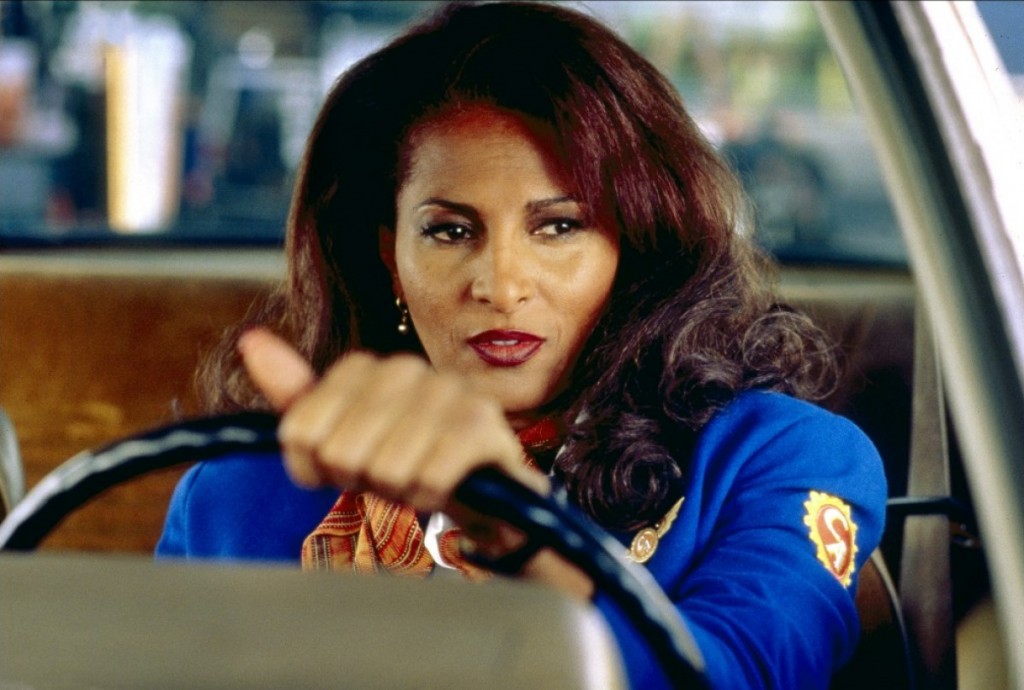
Before the release of “Kill Bill,” Tarantino had yet to widen the scope of his films beyond the familiar California locale and consistently male-dominated casts that distinguish his first three films. With his fourth film (which was released as 2 movies, dubbed “Volume 1” and “Volume 2”), Tarantino expanded his interests both in terms of geography (the film takes place in various regions of the U.S., Mexico, and Japan) and his characters, with this marking the first of his films to feature more female than male main characters. This epic tale of deception and revenge also features a more outrageous form of violence that was absent in his earlier films, with the main character of The Bride taking most of the hits (the film begins with her former assassin squad buddies, led by the slick and brutal Bill, shooting her until she is presumed dead). From there, we see The Bride raped (to be clear: this is heavily alluded to, though never actually shown), slashed at with knives and samurai swords, shot, buried alive, and torturously taught the art of kung fu. 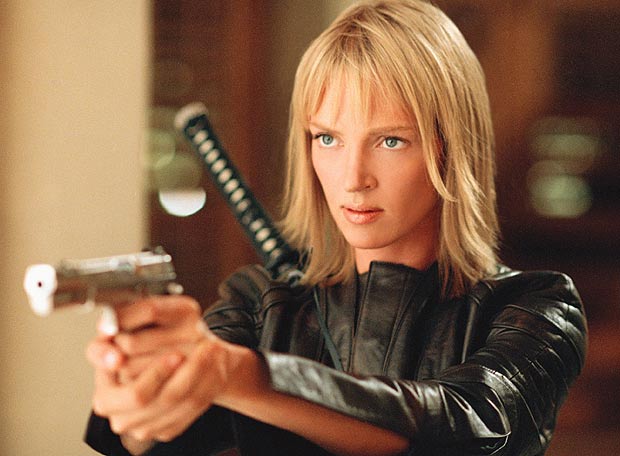
Meanwhile, the other main female characters of O-Ren Ishii, Vernita Green, and Elle Driver get scalped, stabbed, and subjected to a swift but disturbing act of eye-removal, respectively. As harsh as this violence sounds out of context, it feels justified given the entire premise of the film is The Bride’s quest to get revenge against the former colleagues (and former lover) who cruelly betrayed her. The violence in this film feels less shocking or misogynistic than that of Tarantino’s later films because all of the characters are placed on a level playing field. Each character The Bride duels with played an equal part in the attempt to murder her (although Bill, the orchestrator of the murder attempt, undoubtedly shoulders most of the blame) and they are each entirely capable of defending themselves against The Bride’s wrath. Similarly, whenever we see The Bride get slashed or shot at, we are not disturbed or shocked, but excited and expectant because we know The Bride will fight back with equal or greater rage and violence. This quality, as well as her carefully crafted depictions of the emotions one encounters in the face of the assumed loss of a child and the betrayal of friendship (and love), distinguish The Bride as one of the most real, raw, and kick-butt female characters of the 2000s.
Tarantino’s next film, “Death Proof,” (which was actually released as a double feature in a program called “Grindhouse”), was 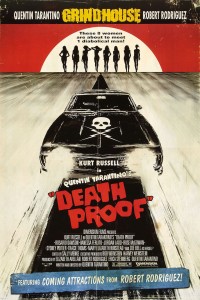 largely ignored by audiences, and those who did see it were not particularly impressed. This film (which follows a psychotic stuntman who terrorizes two separate groups of women with his near-indestructible stunt car) contains the highest number of female main characters in any of Tarantino’s movies, but it also contains the most female-directed violence (one especially disturbing segment of the film tantalizes over the gory aftermath of a car crash in which the first group of women is torn apart by windshields and tires while “Stuntman Mike” escapes largely unscathed). Although it is significant that the majority of the violence in this movie is specifically directed toward women, Tarantino uses these acts of over-the-top violence to illustrate the related point that audiences have a sick and intense fascination with violence, whether it is chaotic and impersonal (as seen in Stuntman Mike’s attack on the first group of women) or calculated and fueled by personal rage (when the second group of women turns the tables by pursuing and killing Mike). At its core, this movie is a gory throwback to slasher films of the 80’s (in which a deranged killer pointlessly attacks groups of young people), and although none of the characters are particularly dynamic or admirable, they are entertaining to watch, and it is admittedly satisfying to watch a group of girls beat up the creep who just tried to kill them.
largely ignored by audiences, and those who did see it were not particularly impressed. This film (which follows a psychotic stuntman who terrorizes two separate groups of women with his near-indestructible stunt car) contains the highest number of female main characters in any of Tarantino’s movies, but it also contains the most female-directed violence (one especially disturbing segment of the film tantalizes over the gory aftermath of a car crash in which the first group of women is torn apart by windshields and tires while “Stuntman Mike” escapes largely unscathed). Although it is significant that the majority of the violence in this movie is specifically directed toward women, Tarantino uses these acts of over-the-top violence to illustrate the related point that audiences have a sick and intense fascination with violence, whether it is chaotic and impersonal (as seen in Stuntman Mike’s attack on the first group of women) or calculated and fueled by personal rage (when the second group of women turns the tables by pursuing and killing Mike). At its core, this movie is a gory throwback to slasher films of the 80’s (in which a deranged killer pointlessly attacks groups of young people), and although none of the characters are particularly dynamic or admirable, they are entertaining to watch, and it is admittedly satisfying to watch a group of girls beat up the creep who just tried to kill them.
While “Death Proof” mostly flew under the radar due to its thin plot and one-note characters, Tarantino’s 2009 follow-up, “Inglourious Basterds,” opened to massive popularity and acclaim for its thrilling plot (the film is set in a Nazi-dominated France, and essentially rewrites the events of World War II) and relentlessly intense and hilarious characters. The two main women of this film are vastly different in their personalities but strikingly similar in their motivations: Shosanna Dreyfus (a French citizen who is secretly Jewish) is a reserved and independent cinema operator, Bridget von Hammersmark is a charismatic German film star. Both women are planning to assassinate Hitler. Dreyfus and Hammersmark are incredibly captivating and multi-dimensional characters who more than hold their own against the rough and tough and not-quite-right-in-the-head men (including a bloodthirsty “Jew Hunter,” a privileged Nazi soldier, and a burly American lieutenant) who try to dominate the film. Throughout, both Dreyfus and Hammersmark are put in tense, grim situations where they emerge the sole survivors (Dreyfus survives the murder of her family by the aforementioned Jew Hunter while Hammersmark’s anti-Nazi comrades die in a shootout with German soldiers), but both persist in their goals to personally end the reign of Hitler. 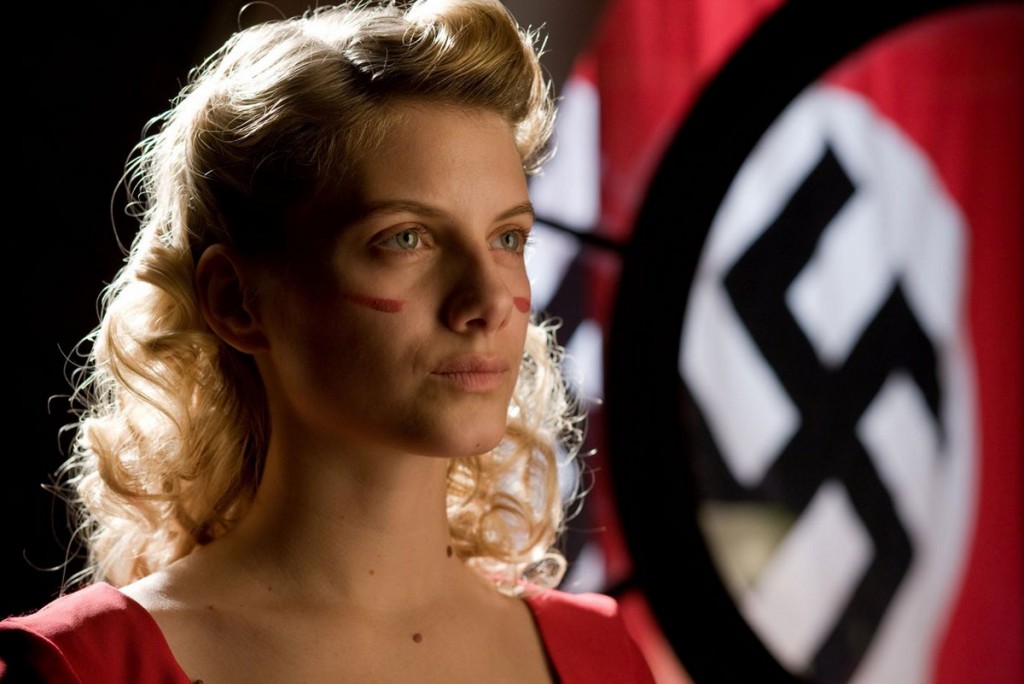
Their determination and complete commitment to their beliefs makes it all the more difficult to watch them killed before any of the real action kicks in: Hammersmark is strangled by the Jew Hunter after he discovers her anti-Nazi allegiance and Dreyfus is shot to death by a German soldier who is angered at her rebuttal of his advances. Dreyfus’s death is particularly important, because although it is an extreme act, it is an equally accurate illustration of the all-too-real concept of “male entitlement,” in which a man thinks he is entitled to something simply because of his masculine status. In this instance, the German soldier believes he is entitled to a relationship with Dreyfus because he was polite and did (what he considered to be) a favor for her. Although Dreyfus is polite and thankful in return, her lack of interest in forming a deeper relationship with him ultimately leads to her untimely and unwarranted death. This is one of the key instances in Tarantino’s films where he cleverly portrays a heightened form of a hostile attitude that women commonly face in order to keep the audience engaged and entertained while simultaneously sparking a discussion amongst viewers about the actual dangers of concepts like male entitlement.
Continuing his successful streak, Tarantino next released “Django Unchained,” an 1850’s-set western film centered on a former slave’s quest to free his enslaved wife. The movie has gone on to become Tarantino’s most financially successful film to date. The only significant female character in this film is that of Broomhilda Von Shaft, the wife to the title character of Django, and although she essentially fuels the entire plot of the movie, I believe she is a somewhat lacking character. Although it is understood that Django’s actions are based on his sole goal of reconnecting with Von Shaft, and we get a solid insight to their relationship and his love for her through flashbacks and Django’s own words, Von Shaft is mostly restricted to “damsel in distress” status throughout the film (albeit this damsel in distress story is unique in that it features enslavement, relentless physical abuse, and other cultural issues of the time). 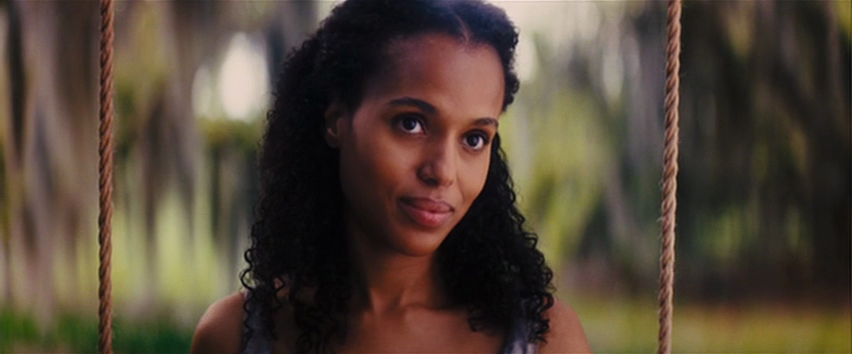
Through Django’s flashbacks, we learn that Von Shaft underwent intense abuse as punishment for an attempt to run away with Django from their masters (she is branded with an ‘R’ on the cheek and severely whipped), and the first time we encounter her in present time, it is in the context of her being removed from a hotbox, where she was being subjected to severe heat and dehydration in retaliation for another escape attempt. These moments are full of pain and fear, and it is affecting to see Von Shaft undergo this cruel treatment considering many period films shy away from the physical abuse of female slaves. But these instances speak more to the issue of slavery as a whole, and the importance of taking an unflinching look at the real abuse slaves underwent, rather than the more modern issue of female-directed violence in film. As such, “Django Unchained” is an important film, though perhaps an uncomfortable one at times, and as a tribute to classic westerns (which feature mysterious, violent, and mostly male characters), the damsel in distress form makes sense, although as a modern viewer, it can be a bit frustrating at times to feel a lack of presence from the character behind all of the action of the film.
Now, we return to the most recent installment of Tarantino’s filmography, “The Hateful Eight.” As previously stated, the sole female character of Daisy Domergue undergoes a substantial amount of sudden and harsh abuse, from punches to the face, a shot in the foot, and a lengthy, unpleasant death by hanging. It is uncomfortable to see all of this occur, partly because Tarantino plays it as somewhat comical, and partly because this sort of abuse is harsh for anyone to endure, regardless of gender. The predominant reason people have responded so strongly to the particular violence against Domergue, however, is because she does not have the opportunity to fight back, or even defend herself, because she is handcuffed to bounty hunter John Ruth (a character also known as “The Hangman”) on account of her fugitive status. The resulting violence against her is not particularly exciting (as it is in “Kill Bill”), or even entertaining to watch (as it can be in “Death Proof”). It feels pointed and aggressive, and I understand the possible perception of it appearing misogynistic. However, it is important to look at this violence in the context of the whole film, and this is an undeniably violent film. The male characters in the film are shot in the head, stomach, and groin, and poisoned to the point of projectile-vomiting blood. To this point, given the twisted, violent cast of characters, John Ruth’s actions toward Domergue are a byproduct of who he is, and although he could be defined as sexist to a certain degree, I do not doubt that if Domergue were a male character, he would treat his fugitive just as harshly. Ultimately, “The Hateful Eight” is a violent movie about violent people who are each twisted and prejudiced in their own ways, and while it can be uncomfortable to see a woman play an equal part in all of this deception and violence, perhaps it shouldn’t be so uncomfortable to watch. Perhaps this is a first step towards giving women more opportunities to play flawed, resilient, rough-around-the-edges female characters who simply have to toughen up and take the offenses they are dealt.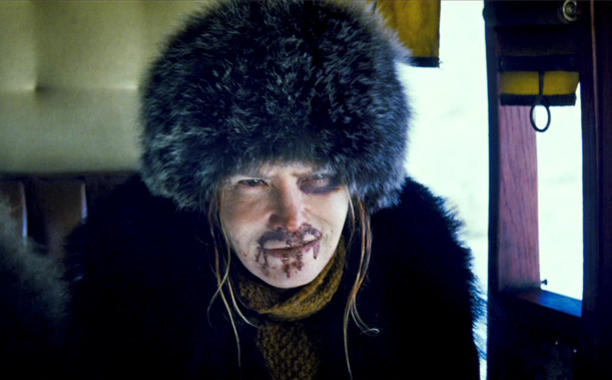
I have a newfound appreciation for Tarantino after watching his films. Yes, he is a controversial figure who may, at times, overstep the boundaries of what is generally considered appropriate for a middle-aged, white filmmaker to do or say or depict on film. But Tarantino is also an artist, and a true original, and I now feel comfortable saying that he has been a pioneer for creating diverse, intriguing and complex female characters, which is something truly worthy of note. His films are daring, chaotic, strange, and a bit hard to swallow at times, but they have inspired me to push the limits of my creativity, expand my opinions and interests, and redefine my definition of a kick-butt woman. I hope my fellow female moviegoers will experience the same excitement and appreciation for his films as I have, and maybe some will even gain inspiration to create their own redefining female film characters as well.

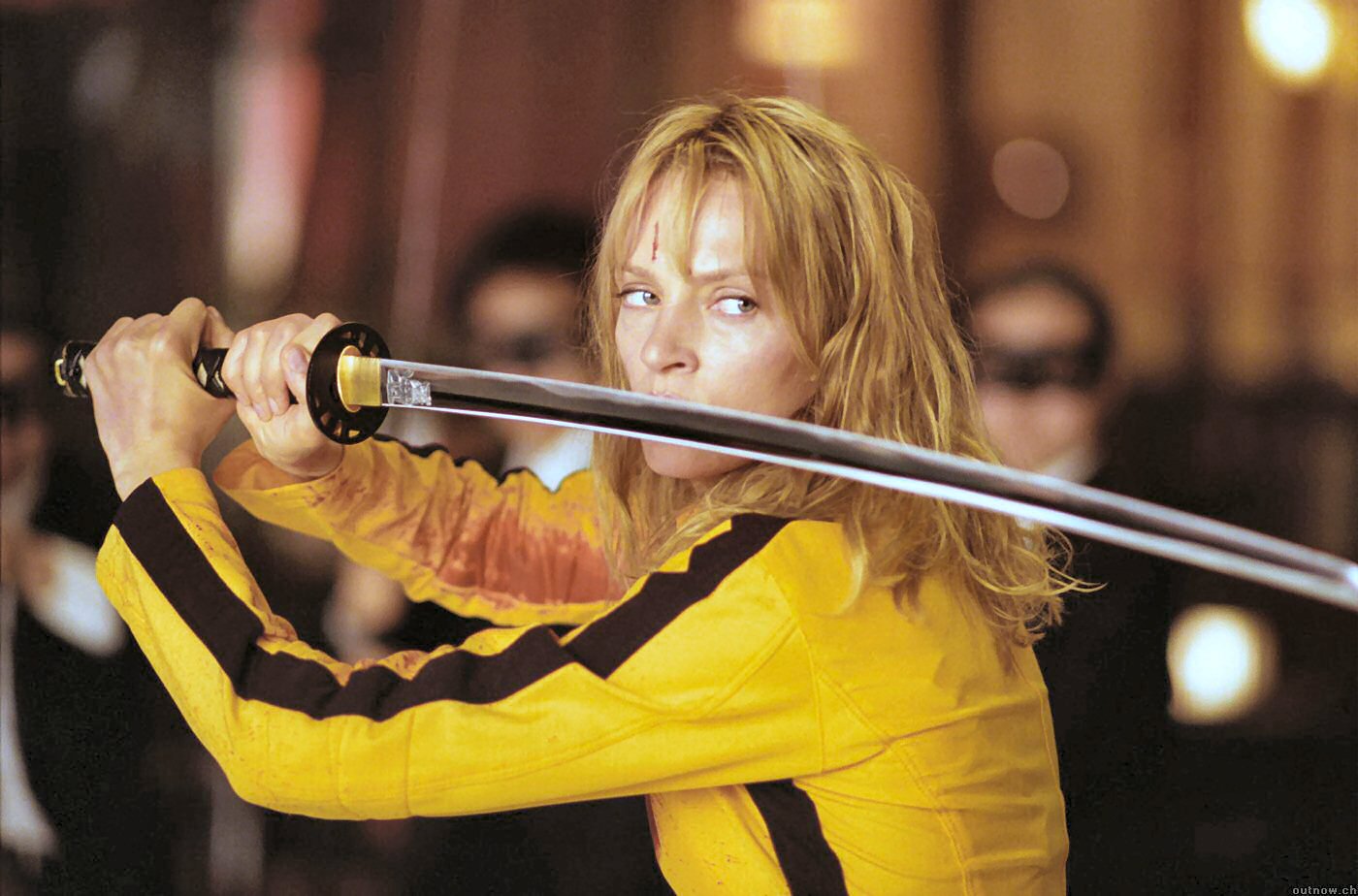



This is something that needs to be said! It pisses me off when people say that women need to be represented more in film, but if a woman gets represented in film realistically, with real flaws and tendencies, people get pissy and complain about misogyny. Women in real life aren’t invulnerable, women in real life aren’t perfect. No one is, and yet when a director like Tarantino actually depicts a real female character people throw a fit because they wanted a mary sue, all-powerful, invulnerable, perfect self insert shell of a character.